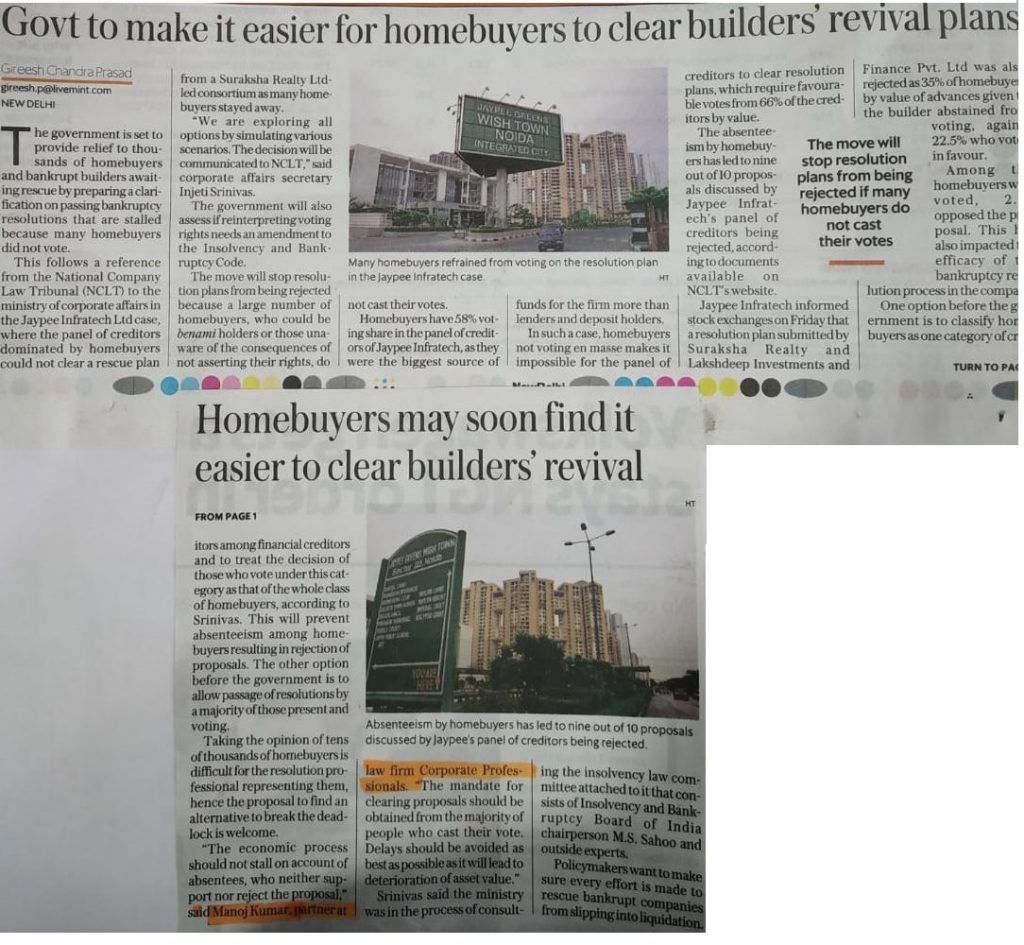
The government is set to provide relief to thousands of homebuyers and bankrupt builders awaiting rescue by preparing a clarification on passing bankruptcy resolutions that are stalled because many homebuyers did not vote.
This follows a reference from the National Company Law Tribunal (NCLT) to the ministry of corporate affairs in the Jaypee Infratech Ltd case, where the panel of creditors dominated by homebuyers could not clear a rescue plan from a Suraksha Realty Ltd-led consortium as many homebuyers stayed away.
“We are exploring all options by simulating various scenarios. The decision will be communicated to NCLT,” said corporate affairs secretary Injeti Srinivas.
The government will also assess if reinterpreting voting rights needs an amendment to the Insolvency and Bankruptcy Code.
The move will stop resolution plans from being rejected because a large number of homebuyers, who could be benami holders or those unaware of the consequences of not asserting their rights, do not cast their votes.
Homebuyers have 58% voting share in the panel of creditors of Jaypee Infratech, as they were the biggest source of funds for the firm more than lenders and deposit holders.
In such a case, homebuyers not voting en masse makes it impossible for the panel of creditors to clear resolution plans, which require favourable votes from 66% of the creditors by value.
The absenteeism by homebuyers has led to nine out of 10 proposals discussed by Jaypee Infratech’s panel of creditors being rejected, according to documents available on NCLT’s website.
Jaypee Infratech informed stock exchanges on Friday that a resolution plan submitted by Suraksha Realty and Lakshdeep Investments and Finance Pvt. Ltd was also rejected as 35% of homebuyers by value of advances given to the builder abstained from voting, against 22.5% who voted in favour.
Among the homebuyers who voted, 2.1% opposed the proposal. This has also impacted the efficacy of the bankruptcy resolution process in the company.
One option before the government is to classify homebuyers as one category of creditors among financial creditors and to treat the decision of those who vote under this category as that of the whole class of homebuyers, according to Srinivas. This will prevent absenteeism among homebuyers resulting in rejection of proposals. The other option before the government is to allow passage of resolutions by a majority of those present and voting.
Taking the opinion of tens of thousands of homebuyers is difficult for the resolution professional representing them, hence the proposal to find an alternative to break the deadlock is welcome.
“The economic process should not stall on account of absentees, who neither support nor reject the proposal,” said Manoj Kumar, partner at law firm Corporate Professionals. “The mandate for clearing proposals should be obtained from the majority of people who cast their vote. Delays should be avoided as best as possible as it will lead to deterioration of asset value.”
Srinivas said the ministry was in the process of consulting the insolvency law committee attached to it that consists of Insolvency and Bankruptcy Board of India chairperson M.S. Sahoo and outside experts.
Policymakers want to make sure every effort is made to rescue bankrupt companies from slipping into liquidation.

